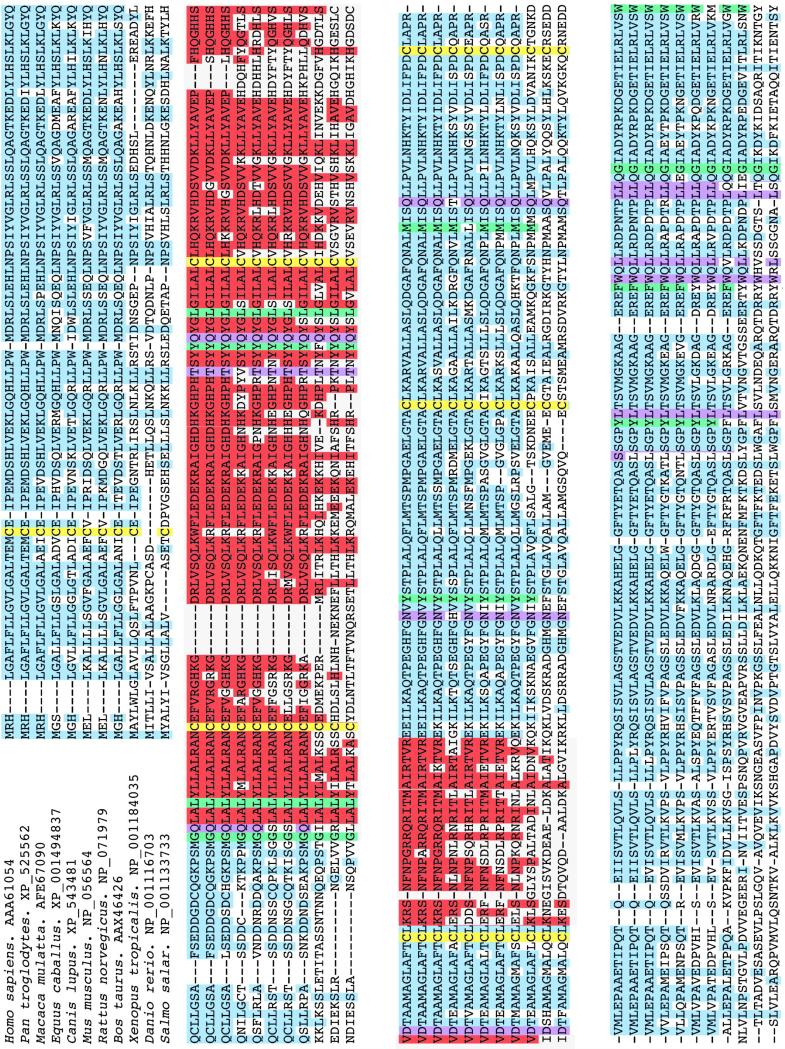Figure 2.
Amino acid sequence homology of TC from various species analyzed using the CLUSTAL 2.0.5 alignment. The cysteines forming disulfide bridges are indicated in yellow; known hydrophobic interactions with cobalamin are indicated in green and hydrogen bonding with cobalamin is indicated in purple; the putative receptor binding regions are indicated in red. The amino acids that bind cobalamin and the highly conserved regions in all species are likely to be involved in interaction with the receptor.

